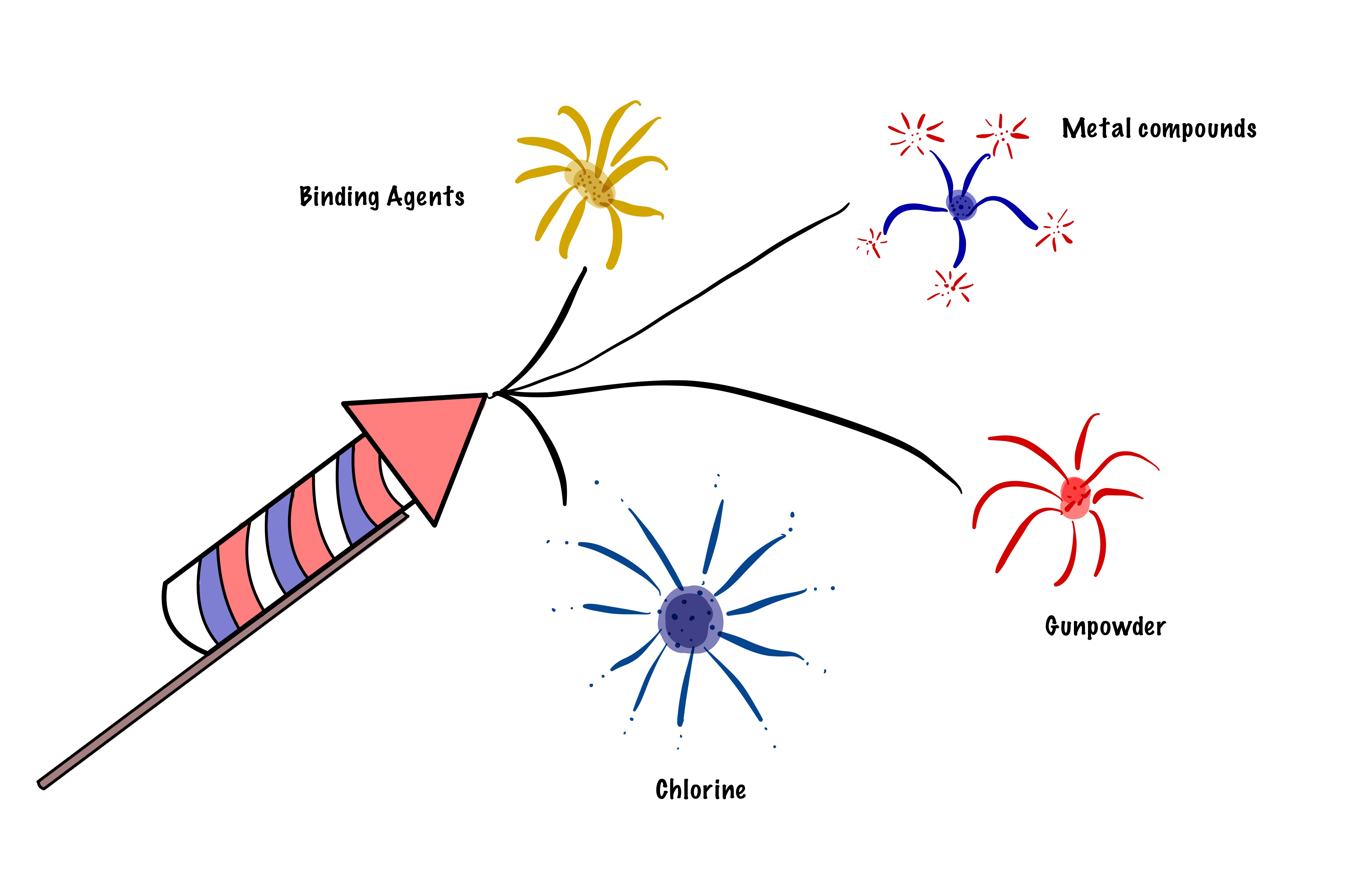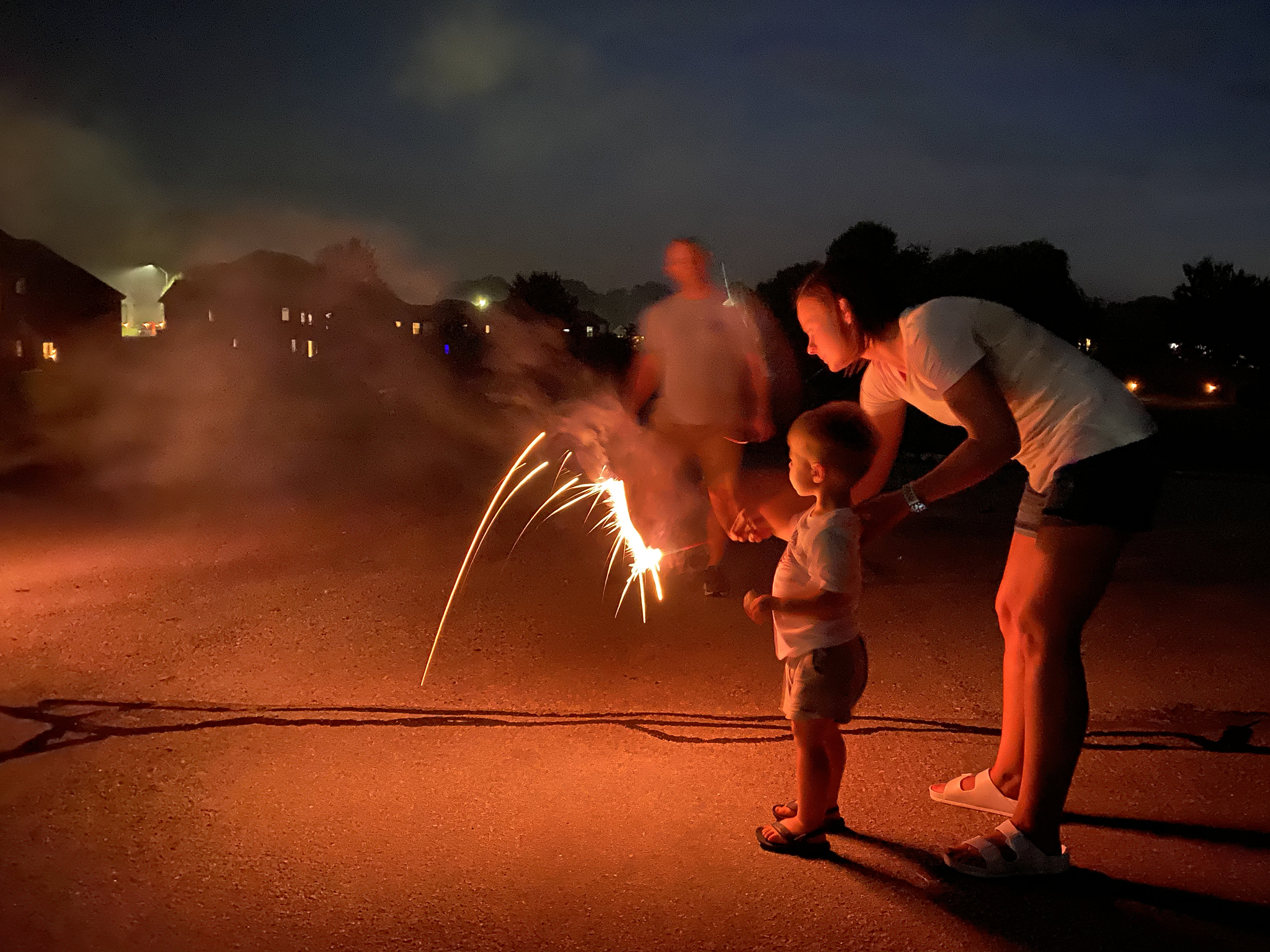Whether it’s the Hammons Field show or a simple sparkler in the backyard, the fireworks come with a cost: pollution.
Air pollution is 42 percent higher on the Fourth of July than any other day of the year, according to a 2015 study published in the Atmospheric Environment.
Fireworks are a chemical explosive, meaning they rely on concentrations of metal compounds, gunpowder, temperature and other chemicals to produce their desired effect.
These metal compounds and chemicals do not disappear after the fireworks are set off. Instead, they linger in the air for up to a day after use and can drift miles away.

These compounds in the air can be dangerous to inhale and can cause “cough, fever, and dyspnea and lead to some cases of acute eosinophilic pneumonia,” according to a study published in the National Library of Medicine. The smoke from these fireworks often disperses into local waterways, due to the fact that most displays are held over some kind of body of water to minimize the chance of starting a wildfire.
The effects of noise pollution
Air and water pollution are not the only risks that come with a fireworks display. Noise pollution is unavoidable on the Fourth of July. The noises made by fireworks can trigger post-traumatic stress disorder, or PTSD, in many people, especially veterans. It is estimated that at least 30 percent of veterans suffer from PTSD, according to the U.S. Department of Veteran Affairs.
Fireworks create an environment with loud, irregular noises in the dark, which can be reminiscent of combat situations, according to clinical psychologist Leah Blain.
Animals can also be harmed by this noise pollution. Approximately 52 percent of dogs experience a fear of fireworks, according to a study from the PLOS journal.
Fireworks also disturb local wildlife, the noise pollution combined with the light pollution can disrupt animals' sense of time and send many into shock. A study published in 2011 by Behavioral Ecology found that fireworks displays can cause birds to migrate for up to 45 minutes after the display.
The tradition persists

Despite all of these harmful side effects, fireworks are a common way to celebrate Independence Day. Approximately 428.8 million pounds of fireworks were consumed in 2021, according to the American Pyrotechnic Association. It is estimated that over two firework-related injuries occur per each pound of fireworks consumed, which may be why Springfield banned the sale use of fireworks except for public displays.
Luckily, there are other, more environmentally conscious ways to celebrate the Fourth of July.
Eco-conscious ways to celebrate Independence Day:
- Kayaking on local water trails
- Hiking on scenic trails
- Watching Springfield's annual parade
- Hosting a block party or cookout
Abigail Zajac is a general assignment intern at the Hauxeda. She’s currently a sophomore at Missouri State University studying creative writing and sustainability. Zajac is interested in arts, culture and the environment. More by Abigail Zajac

